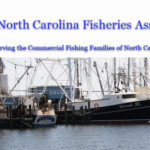Tag Archives: Geoff Irvine
‘Cruel’ tariff threats bring endless uncertainty to N.B. fisheries
 Leaders in New Brunswick’s fishing industry are not mincing words when it comes to the cloud of uncertainty hanging over the constant back and forth of tariff threats from U.S. President Donald Trump. “Oh, it’s painful. It’s painful,” said Geoff Irvine, executive director of the Lobster Council of Canada, in an interview. The latest date for tariffs to take effect, now set for April 2, coincides with the opening of lobster season in some sectors of the Atlantic region, but that’s about all Irvine could say for certain about the potential impact. “Honestly, I don’t have a clue. Every single processor, shipper and exporter will have to talk to their customers.” He said the constantly changing news is destabilizing. more, >>CLICK TO READ<< 11:31
Leaders in New Brunswick’s fishing industry are not mincing words when it comes to the cloud of uncertainty hanging over the constant back and forth of tariff threats from U.S. President Donald Trump. “Oh, it’s painful. It’s painful,” said Geoff Irvine, executive director of the Lobster Council of Canada, in an interview. The latest date for tariffs to take effect, now set for April 2, coincides with the opening of lobster season in some sectors of the Atlantic region, but that’s about all Irvine could say for certain about the potential impact. “Honestly, I don’t have a clue. Every single processor, shipper and exporter will have to talk to their customers.” He said the constantly changing news is destabilizing. more, >>CLICK TO READ<< 11:31
Fishing industry watches tariff battle, counting the days till spring seasons
 Like everyone, Nova Scotia’s fishing industry has been trying to parse what U.S. President Donald Trump’s tariffs will mean for them. “It’s too early to know yet,” said Geoff Irvine, executive director of the Lobster Council of Canada. There is little lobster coming ashore right now, which buys the industry time to hope for a resolution that sees the 25 per cent tariff on all Canadian products heading south dropped. Fishing will pick up later this month off southwest Nova Scotia as waters warm, and then in April seasons will start opening from Newfoundland and Prince Edward Island to Nova Scotia, with massive quantities of crustaceans coming over wharves throughout the region by May 1. more, >>CLICK TO READ<< 06:29
Like everyone, Nova Scotia’s fishing industry has been trying to parse what U.S. President Donald Trump’s tariffs will mean for them. “It’s too early to know yet,” said Geoff Irvine, executive director of the Lobster Council of Canada. There is little lobster coming ashore right now, which buys the industry time to hope for a resolution that sees the 25 per cent tariff on all Canadian products heading south dropped. Fishing will pick up later this month off southwest Nova Scotia as waters warm, and then in April seasons will start opening from Newfoundland and Prince Edward Island to Nova Scotia, with massive quantities of crustaceans coming over wharves throughout the region by May 1. more, >>CLICK TO READ<< 06:29
Trump’s tariff threats loom large over Newfoundland’s crab fishery
 Even though Newfoundland and Labrador’s snow crab season at least eight weeks away, Doug Trainor is hard at work getting ready for this year’s fishery. His boat, D.R.A Enterprises, is hoisted up on dry ground in Petty Harbour, where he’s replacing the engine and working with his son on other upgrades. It’s a big investment – tens of thousands of dollars – but after last year’s unrest in the crab fishery, which saw big protests at the Confederation Building in St. John’s, he says he felt like this season would be more predictable, safer and profitable. “We figured it would be good this year, this was going to be the year,” he said. “Then, all of a sudden, Trump came out.” U.S. president-elect Donald Trump’s threats of steep tariffs on Canadian products entering the United States has stirred a lot of industries in the country, but Newfoundland’s fishery is particularly susceptible. more, >>CLICK TO READ<< 07:43
Even though Newfoundland and Labrador’s snow crab season at least eight weeks away, Doug Trainor is hard at work getting ready for this year’s fishery. His boat, D.R.A Enterprises, is hoisted up on dry ground in Petty Harbour, where he’s replacing the engine and working with his son on other upgrades. It’s a big investment – tens of thousands of dollars – but after last year’s unrest in the crab fishery, which saw big protests at the Confederation Building in St. John’s, he says he felt like this season would be more predictable, safer and profitable. “We figured it would be good this year, this was going to be the year,” he said. “Then, all of a sudden, Trump came out.” U.S. president-elect Donald Trump’s threats of steep tariffs on Canadian products entering the United States has stirred a lot of industries in the country, but Newfoundland’s fishery is particularly susceptible. more, >>CLICK TO READ<< 07:43
Lobster harvesters in Atlantic Canada to vote on increasing minimum legal size this year
 At stake is maintaining access to the United States market. “It will be an individual vote. That’s a big decision that every single enterprise and owner has to look at from their own business,” said Heather Mulock, executive director of the Coldwater Lobster Association, which represents fishermen in lobster fishing area 34 (LFA 34). In late May or June, the 979 licence holders in the area will be asked to vote on whether to match increases in allowable U.S. catch measurements that will come into effect Jan. 1, 2025, and again in 2027. Live Canadian lobster that fall under the new limits would not be allowed into the U.S. That includes bonded shipments of lobster under the new minimum in the U.S., according to an information package sent to fishermen in southwestern Nova Scotia. That could block trucking of “undersized” Canadian lobster across the border for flights to Asia from airports in Boston or New York. more, >>click to read<< 08: 57
At stake is maintaining access to the United States market. “It will be an individual vote. That’s a big decision that every single enterprise and owner has to look at from their own business,” said Heather Mulock, executive director of the Coldwater Lobster Association, which represents fishermen in lobster fishing area 34 (LFA 34). In late May or June, the 979 licence holders in the area will be asked to vote on whether to match increases in allowable U.S. catch measurements that will come into effect Jan. 1, 2025, and again in 2027. Live Canadian lobster that fall under the new limits would not be allowed into the U.S. That includes bonded shipments of lobster under the new minimum in the U.S., according to an information package sent to fishermen in southwestern Nova Scotia. That could block trucking of “undersized” Canadian lobster across the border for flights to Asia from airports in Boston or New York. more, >>click to read<< 08: 57
Rogue wave hits Canadian lobster industry as U.S. moves to increase minimum legal size
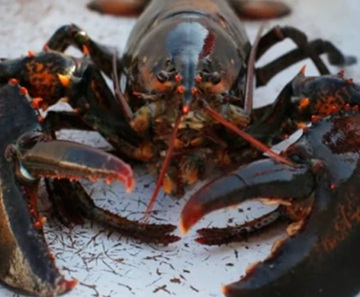 An unexpected decision to increase the minimum legal size of lobster in the United States has appeared like a rogue wave on the Canadian industry, threatening to curtail live exports south of the border. With total Canadian live shipments worth $545 million in 2022, the potential trade implications was the first item on the agenda in the annual U.S.-Canada lobster town meeting being held in Moncton, N.B., this week. “Effectively we will not be able to ship a certain size lobster there that we always have. So their action will create an action that we have to respond to in Canada,” said Geoff Irvine, executive director of the Lobster Council of Canada. The U.S. move to increase the minimum legal size of a lobster carapace, or outer shell, from 82 millimetres to 84 millimetres in January 2025 — and to 86 millimetres in 2027 — would create a mismatch in the closely integrated two-way trading between the countries. photos, more, >>click to read<< 10:22
An unexpected decision to increase the minimum legal size of lobster in the United States has appeared like a rogue wave on the Canadian industry, threatening to curtail live exports south of the border. With total Canadian live shipments worth $545 million in 2022, the potential trade implications was the first item on the agenda in the annual U.S.-Canada lobster town meeting being held in Moncton, N.B., this week. “Effectively we will not be able to ship a certain size lobster there that we always have. So their action will create an action that we have to respond to in Canada,” said Geoff Irvine, executive director of the Lobster Council of Canada. The U.S. move to increase the minimum legal size of a lobster carapace, or outer shell, from 82 millimetres to 84 millimetres in January 2025 — and to 86 millimetres in 2027 — would create a mismatch in the closely integrated two-way trading between the countries. photos, more, >>click to read<< 10:22
Canada’s biggest lobster fishery on notice after Right Whale entanglement in Nova Scotia gear
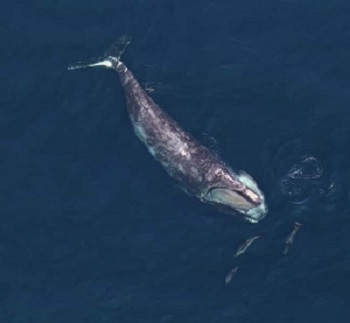 The entanglement of a North Atlantic right whale in Canadian lobster gear earlier this year will increase scrutiny this season on the lucrative southwestern Nova Scotia lobster fishery. In order to be certified as sustainable, the fishery must now prove its actions will not hinder the recovery of the critically endangered species. “This means the fishery has to demonstrate in collaboration with [the Department of Fisheries and Oceans that it’s going to strengthen its strategy to mitigate impacts on right whales,” says Kurtis Hayne, program director for the Marine Stewardship Council (MSC) in Canada. To satisfy the conditions, the Lobster Council of Canada, on behalf of industry and the Department of Fisheries and Oceans (DFO), have developed an action plan to increase overflights in lobster fishing area 33 and increase data collection, says Lobster Council executive director Geoff Irvine. more, >>click to read<< 06:39
The entanglement of a North Atlantic right whale in Canadian lobster gear earlier this year will increase scrutiny this season on the lucrative southwestern Nova Scotia lobster fishery. In order to be certified as sustainable, the fishery must now prove its actions will not hinder the recovery of the critically endangered species. “This means the fishery has to demonstrate in collaboration with [the Department of Fisheries and Oceans that it’s going to strengthen its strategy to mitigate impacts on right whales,” says Kurtis Hayne, program director for the Marine Stewardship Council (MSC) in Canada. To satisfy the conditions, the Lobster Council of Canada, on behalf of industry and the Department of Fisheries and Oceans (DFO), have developed an action plan to increase overflights in lobster fishing area 33 and increase data collection, says Lobster Council executive director Geoff Irvine. more, >>click to read<< 06:39
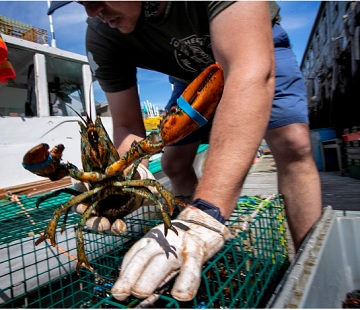
Despite a pause on new regulations, U.S. and Canadian lobstermen see big challenges ahead
After a two-year hiatus, members of the U.S. and Canadian lobster fisheries met in Portland over the weekend to discuss challenges facing their industry. Top of mind is how the industry will prepare before new federal regulations designed to protect endangered right whales begin in six years. Fisheries in Maine had late last year expressed relief about the years-long delay in the rules change included in a federal spending bill, as it bought the industry more time to research and test new fishing techniques and other measures aimed at protecting North Atlantic right whales. >click to read< 09:10

U.S. inflation is sinking Canadian lobster and snow crab prices – U.S. consumers giving up pricey seafood
The price of Canada’s two most valuable seafoods is crashing this year as consumers recoil from the impact of rising inflation. The price of snow crab has plummeted in 2022 between 60 and 65 per cent while lobster prices have fallen about 35 per cent. Demand that had built up during the pandemic for all types of frozen and fresh seafood powered the Nova Scotia industry to a record-breaking year in 2021 with revenues reaching $2.5 billion, led by the two shellfish. But high prices for frozen snow crab and frozen lobster, along with a modest increase in the price of live lobster last year, are melting in 2022. “And the reason is that consumers backed away from the high prices at the same time that they began to be buffeted by these other problems of high gasoline prices, inflation and concern about lack of economic support,” John Sackton said. >click to read< 09:48
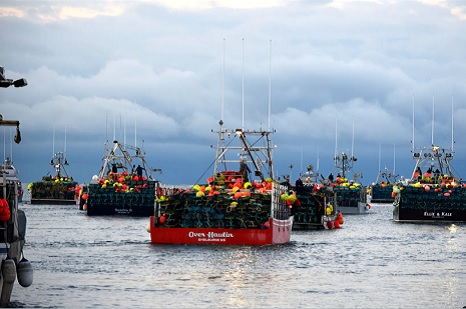
East Coast lobster harvest sustainable, according to non-profit’s criteria — but a Seafood Watch report advises consumers to avoid it
A recent report by a California-based seafood assessment group has the East Coast lobster industry seeing red. While Seafood Watch has put lobster on its “red list” and recommend consumers avoid it, lobster fisheries in most areas of Atlantic Canada have been certified sustainable by another group that has significant credentials in the business of seafood accreditation. In existence for about 25 years, the Marine Stewardship Council is a global non-profit organization that works to end overfishing around the world. Catherine Pigeon-Dubeau, fisheries and commercial manager for MSC in Eastern Canada, said the last review of the East Coast lobster fishery was in July of this year, and the Blue Label certification remains in place. >click to read< 14:10

Lobster fishermen angry about low prices refuse to fish
About 250 southeastern New Brunswick lobster fishermen gathered outside the new Homarus Centre in Shediac on Thursday after refusing to fish. The fishermen say prices are 40 per cent lower than last year, when they were getting $7 for a pound of lobster. This season, they said, they’re getting $4.50 to $5 a pound, which they say isn’t profitable with the higher expenses they’ve faced because of inflation. Luc Leblanc, the spokesperson from the Maritime Fishermen’s Union said the gathering was peaceful. “The fishermen just wanted to let their feelings known and to make a little bit of a splash, which is what they did.” Geoff Irvine of the Lobster Council Canada said prices are declining because of consumer behaviour and market patterns. >click to read< 18:21

Will Atlantic Canada lobster season break another sales record? Or will inflation curb consumer appetite,,,
Roger Fowlow is paying a lot of attention to the long-range marine forecast these days. Lobster season opens soon and he’s hoping the unsettled spring weather will ease off, giving him light winds to set his lobster pots. He used to catch cod, but with quotas so low, cod prices stalled for years at less than a dollar a pound, and fuel prices soaring this year. He said it’s not worth bothering with. Lobster is the money maker, and the last few years have given him good catches and good prices. Fowlow is confident of good catches again this year. But on the question of the price he might get paid, he’s not so certain. For P.E.I. lobster fisher Bethany McCarthy, inflation is already driving up the cost of running her boat. In addition to higher prices for fuel, she’ll have to shell out more money for bait this year, thanks to DFO’s decision to kill the mackerel fishery. photos, video, >click to read< 12:15
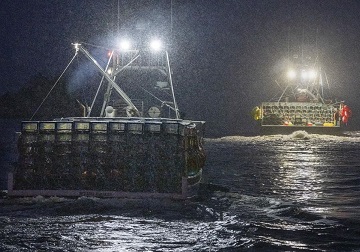
The value of Canadian lobster exports has skyrocketed driving the wharf price toward a record high
Two weeks ago, at wharfs in Nova Scotia, the price of lobster was the highest it has ever been. Stewart Lamont, managing director of Tangier Lobster Company, a live lobster exporter in Nova Scotia, said the shore price for lobster, the amount fishermen get from buyers, was $18 a pound. That’s more than double the regular pre-pandemic price. It has since gone down due to a drop in exports and higher supply. Lamont said this week lobster was around $12 to $12.50 a pound. While high prices mean more money for lobster exporters and fishermen, Lamont said he is scared that if lobster becomes too expensive, people and businesses will simply stop buying it. >click to read< 10:52
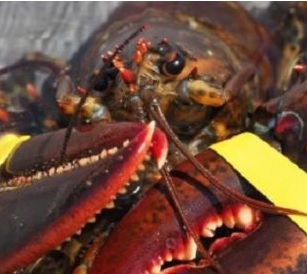
‘Our lobsters are gold plated now:’ Atlantic Canada lobster exports, prices soar
“Our lobsters are gold-plated now. Prices have been the highest in commercial history,” says Stewart Lamont, managing director of Tangier Lobster Co. Ltd, a live lobster exporter on Nova Scotia’s eastern shore. When the pandemic hit, export and restaurant industry demand plummeted. The shore price of lobster, the amount fishers get at the wharf from buyers, sunk as low as $4 a pound. “There was an initial glut of lobsters on the market at the start of the lockdown but then it spun back the other way,” says Colin Sproul, president of the Bay of Fundy Inshore Fishermen’s Association. >click to read< 16:47

“We’re not sure what it means,” – Trump turns an eye on Canadian lobster, launches Trade Investigation
On Aug. 24, the United States International Trade Commission announced it will investigate the possible negative effects of the Canada-Europe Trade Agreement (CETA) on American lobster exports. The investigation was requested by U.S. Trade Representative Robert Lighthizer. The investigation will also examine tariff treatment of Canadian lobster in the United Kingdom, China and other countries. “We’re not sure what it means,” said Geoff Irvine, executive director of the Lobster Council of Canada. “We’re studying it. The government of Canada is studying it. Now we’re talking to our colleagues in the U.S. and we’re trying to figure out how best to manage it from the Canadian side.” >click to read< 08:36
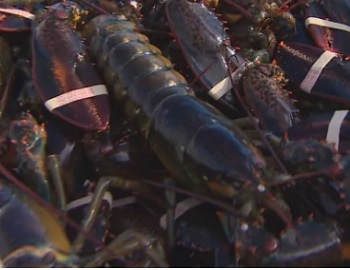
Canadian lobster to China hits another roadblock, demand a signed declaration live lobster is Coronavirus free
Canadian businesses that export lobster to China have run into another border roadblock. On Friday, Chinese importers started demanding a signed declaration that Canadian live and processed lobster is free of COVID-19 before it can enter China. “It’s a bold thing to ask and we as Canadian exporters should push back,” says Stewart Lamont of Tangier Lobster in Nova Scotia. His company flies lobster to mainland China. Lamont has refused to sign the declaration, which makes Canadian companies liable in the Chinese court system if there is a problem. >click to read< 18:52
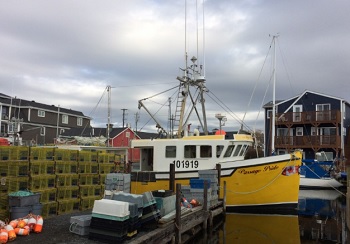
After months of lobster industry losses, things may finally be taking a turn for the better
“We’ve come through the pandemic and it’s been challenging for everyone, to say the least,” says Geoff Irvine, Executive Director of The Lobster Council of Canada. This week, lobster season opened for some parts of the Maritimes including the North shore of New Brunswick, some parts of PEI, Nova Scotia’s Northumberland Strait and pars of Nova Scotia’s Northumberland Strait. “We’ve seen the lobster market adjust quite dramatically from very strong demand and high, high prices, record prices in January pre-pandemic, and we’ve adjusted to a new reality and we’re in recovery mode now,” Irvine says. >click to read< 16:01
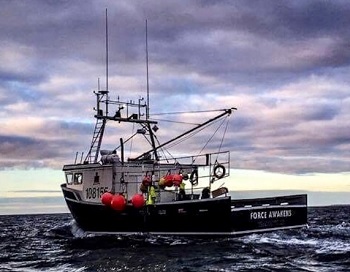
‘Nothing is normal’: LFA 34 & 33 lobster fishery draws to a close in southwest N.S.
The commercial lobster fishery in southwestern Nova Scotia and along the south shore, draws to a close May 31. Crews are bringing gear back ashore at the conclusion of a season that saw a promising start with catches and the price paid to fishermen, but then hit rough waters due to the coronavirus pandemic. “You wouldn’t believe the amount of people that are already hauled up. Some five days early or more,” said Yarmouth County fishing captain Shawn Muise, following a day of fishing on his vessel, Force Awakens, on May 29. “Nothing is normal.” “The season was going so well at the start. Finally the prices were reflecting the market. But when COVID started, and as the price started to drop, you could see it in the fishermen’s faces,” Lots of photos, >click to read< 07:29

Nova Scotia’s lobster industry faces massive setbacks due to Coronavirus impacts
It was shaping up to be one the best seasons ever, but then COVID-19 struck. Geoff Irvine says “it was probably the best time in the lobster industry ever.” As executive director of the Lobster Council of Canada, things were looking up as the new decade began. The shore price was good, catches were consistent and filled the demands of the markets for live and processed lobster. Then, along came COVID-19. Irvine says the Chinese market, the Atlantic industry’s biggest for live lobster, started to collapse on January 25th as they began closing restaurants in China. Europe and the United States would soon follow. Why can’t fishers just wait it out until demand rises again? It’s not that simple. >click to read< 11:28
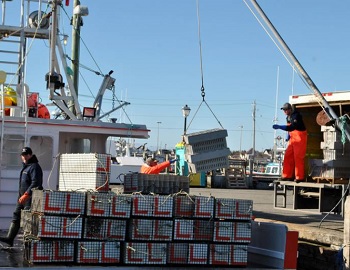
Coronavirus shuts down Chinese market for live Nova Scotia lobsters sending industry into panic mode
The sudden and unexpected temporary loss of the Chinese market for Nova Scotia live lobsters due to the coronavirus epidemic is creating a panic situation for the lobster industry.,, “Some people had inventory put away for the Chinese New Year that never got all their product over there in time,” “Everybody’s trying to push lobsters into the U.S. now so they flooded that market on Monday. To be honest we have no sales at all for our lobsters at this point,” said Cotter. >click to read< 14:42
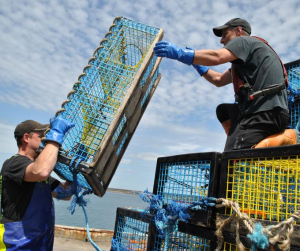
Lobster harvesters unfairly blamed of harm to North Atlantic right whales
Much has been written about the ongoing challenge of protecting the North Atlantic right whale along the eastern seaboard of the U.S. and in the Gulf of St. Lawrence. The impact the 18 reported deaths in 2017 has had on the entire right whale population cannot be understated. The issue in many cases has been a lack of substantiated facts with regard to specific fisheries and the ongoing commitment by key fisheries to protect the right whale. The Canadian lobster fishery is one of those key fisheries that has, until now, remained silent about our role and our ongoing commitment to North Atlantic right whale protection. Our harvesters and processors do what’s needed to ensure a sustainable fishery without fanfare. >click to read<08:28







































